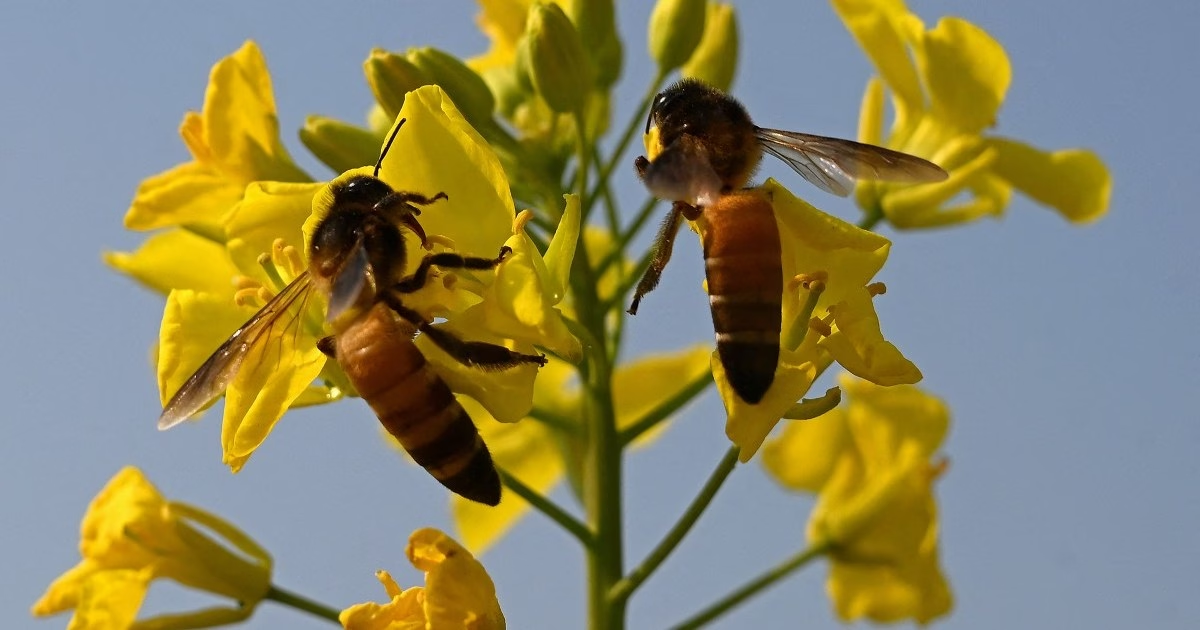Under Pakistan’s smog-laden sky, a beekeeper in the Punjab province is loading boxes, each packed with thousands of bees, onto a truck. These boxes, carrying the industrious insects, will travel about 300 miles in a relentless quest for the essential conditions for honey production. The alarming threats of climate change and pollution are casting a shadow over the Beekeeping industry.
Typically, Pakistani beekeepers migrate seasonally, escaping the extremes of heat and cold. They end up spending their summers in Khyber Pakhtunkhwa and their winters in Punjab. But with the unpredictability of climate change and the world’s worst pollution trends, beekeepers are now forced to move more often and travel greater distances.
This winter stood out with dangerously high smog levels, declared a national crisis by the government. Research has shown that air pollution complicates bees’ ability to find flowers. Furthermore, the sparse rainfall has caused the air to remain suffocating and has raised concerns of drought for farmers.
Pakistan’s 27,000 beekeepers once benefited from the diversity of foliage nurtured by consistent rainfall, providing a rich source of nectar. Their honey is a staple in local remedies for flu, a delightful topping for sweets, and a cherished gift. However, since 2022, the country’s honey production has seen a 15% decline, as reported by the Honey Bee Research Institute in Islamabad.
Globally, bees are under threat due to shifting weather patterns, aggressive farming, land-use changes, and pesticide use. The impact extends beyond the honey trade, affecting food security as bees are responsible for a third of the world’s food production.
Pakistan’s bee population once offered 22 types of honey, but this number has dropped to 11, with three of the four honeybee species now endangered. Frequent moves are expensive for beekeepers, especially with the surge in fuel prices. Those searching for better conditions often face harassment if they set up without permission from landlords.
A glimmer of hope comes from new technology designed to mitigate the effects of extreme temperatures on bees, if not their food sources. Abdullah Chaudry, a former beekeeper, has developed hives with improved ventilation, drawing inspiration from practices in other countries facing similar temperature challenges, like Turkiye and Australia.
Initial signs indicate these new boxes boost production by about 10%, but they represent just one piece of the adaptation puzzle.
Typically, Pakistani beekeepers migrate seasonally, escaping the extremes of heat and cold. They end up spending their summers in Khyber Pakhtunkhwa and their winters in Punjab. But with the unpredictability of climate change and the world’s worst pollution trends, beekeepers are now forced to move more often and travel greater distances.
This winter stood out with dangerously high smog levels, declared a national crisis by the government. Research has shown that air pollution complicates bees’ ability to find flowers. Furthermore, the sparse rainfall has caused the air to remain suffocating and has raised concerns of drought for farmers.
Pakistan’s 27,000 beekeepers once benefited from the diversity of foliage nurtured by consistent rainfall, providing a rich source of nectar. Their honey is a staple in local remedies for flu, a delightful topping for sweets, and a cherished gift. However, since 2022, the country’s honey production has seen a 15% decline, as reported by the Honey Bee Research Institute in Islamabad.
Globally, bees are under threat due to shifting weather patterns, aggressive farming, land-use changes, and pesticide use. The impact extends beyond the honey trade, affecting food security as bees are responsible for a third of the world’s food production.
Pakistan’s bee population once offered 22 types of honey, but this number has dropped to 11, with three of the four honeybee species now endangered. Frequent moves are expensive for beekeepers, especially with the surge in fuel prices. Those searching for better conditions often face harassment if they set up without permission from landlords.
A glimmer of hope comes from new technology designed to mitigate the effects of extreme temperatures on bees, if not their food sources. Abdullah Chaudry, a former beekeeper, has developed hives with improved ventilation, drawing inspiration from practices in other countries facing similar temperature challenges, like Turkiye and Australia.
Initial signs indicate these new boxes boost production by about 10%, but they represent just one piece of the adaptation puzzle.






